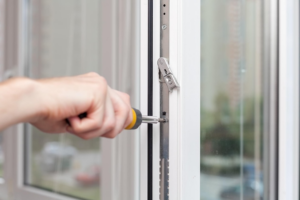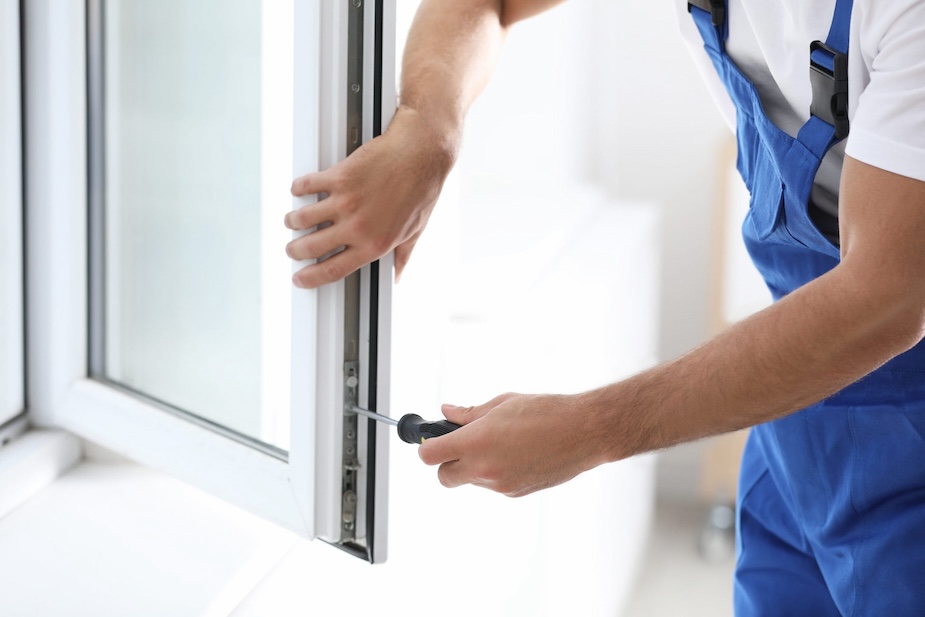
Black Shadows © 2013 -
Mentions légales/Policies
Mentions légales/Policies

How to Do Your Own Lock Repair
If your locks start to fail You can attempt to fix them yourself or employ an professional locksmith. However, repair of replace window locks isn’t easy and if you don’t follow the correct procedure, it could lead to further damage.
 The first step is to make sure the problem is not caused by dust or dirt. Graphite spray or silicone-based oil can be used to solve this issue.
The first step is to make sure the problem is not caused by dust or dirt. Graphite spray or silicone-based oil can be used to solve this issue.
1. Door Knobs or Handles that are loose
Over time, door knobs and handles can become loose. This can lead to the knob or handle becoming jiggly that is difficult for you to open. Loose door knobs aren’t just annoying but they can compromise your building’s security, so it is important to find and solve the issue quickly. A doorknob that is loose is easy to fix. There are several ways to do this, dependent on the lock your door comes with. Certain systems have mounting screws that are easy to access, whereas others use a backplate that hides the screws that hold it together. If your door is the second type, this process might be more difficult.
The majority of interior doorknobs are designed to slip over a cylindrical spindle which is attached to the door as a part of the latch assembly. If yours is jiggly it could be due to a small screw known as a set screw located inside the knob that blocks it from sliding over spindle. You can utilize an flashlight to locate the set screw, then tighten it using an Allen wrench. After it’s tightened, turn the knob to check if it no longer feels jiggly.
If your knob is still moving, it could be because the set screw isn’t placed correctly. To ensure that the screw is positioned correctly, look for a small, identical button on the spindle. Press the button using an screwdriver with a flat head, and then slide the knob over the spindle. The knob should move into the proper position when you do this, which indicates that it is positioned correctly on the spindle.
After ensuring that the set screw is properly positioned and tighten it once more to secure the knob or handle in the correct position. This should fix the problem however, if it doesn’t, you may have to take the knob off and check the backplate for loose or missing screws. If this is the case, you will require replacing these screws before re-securing the knob or handle. If you’re not happy with this type of repair, seek out a professional locksmith who offers damaged lock repair to help.
2. Key Won’t Turn in Lock
There are a number of reasons why your key could cease to turn in the lock. One of the most common reasons is that the pins inside the cylinder are beginning to wear down, which means they don’t have the correct shape to move the wafers, sliders, or tumblers that allow the key to open the lock. In this instance spraying the lock with silicone-based lubricant or graphite spray will coat the pins and allow them to move again.
If the issue is more severe, and the key has bent, you may have to have it straightened by an expert. A professional locksmith can you replace locks on upvc windows employ an instrument specifically designed to straighten the keys, which has a curved end to fit into the groove in the tip of the key. This type of tool isn’t available at hardware stores, however you can purchase a kit that includes the proper tools online or in an establishment that sells locksmith tools.
Another possibility is that the lock has become dirty or contaminated. Dust can build up over time in the lock cylinder and cause the pins or springs to get stuck. In this instance you’ll need to spray the lock with WD-40, graphite spray, or a silicone-based lubricant to clean it out and then reposition the pins back to their original positions.
If the key itself has become damaged, it could also be a cause for concern. Keys can wear down with time due to frequent use, which could result in the groves wearing down or even become smoother. This can lead to the key not fitting into the cylinder, therefore it’s important to pay attention and check regularly that your key is fitted correctly.
Locks can freeze in the winter months. This will prevent the springs and pins from moving when a key is inserted. This can be a frustrating issue however it is usually resolved by warming the lock up by using hot water and then re-lubricating it. However, if the lock is damaged or frozen beyond repair window locks upvc, it will likely require replacement by a professional.
3. The Lock Isn’t Turning
It can be frustrating to have a lock that won’t turn or open. If this happens frequently you might want to consider hiring a locksmith to inspect the lock to see whether they can assist. This is not always necessary since some issues can be solved by yourself.
Often the key won’t turn in a lock because it’s damaged. This could happen when you’ve lost your key, or it is broken in the lock. Instead of trying to pull the key from the lock which could result in it being further pushed into the mechanism, and make it worse you can use needle-nosedpliers to take the key from the lock. Be careful not to harm the double glazed window Lock mechanism replacement by breaking off any piece of the damaged key with the pliers.
It’s possible that your lock isn’t aligned correctly, which can cause the door to not latch properly. If you have an extra lock key, you may test it to ensure that the lock is working properly. If you find that the upvc window lock repairs is not correctly aligned, tightening screws around the strikeplate will solve the issue and let the lock to function normally.
A lock might not turn due to dust or dirt. Using graphite sprays or a silicone-based lubricant will solve this problem by coating the pins inside the lock, allowing them to move up and down in a normal manner. You should avoid using oil-based products like WD-40 for instance, as they can cause more clogging in the future.
Lastly, it’s worth noting that there are certain kinds of keys that aren’t able to fit in all locks. If yours is one of them then it’s time to get a upvc window replacement lock key from a local hardware store, so that it can be used in the lock.
4. The Cylinder is Rotating
When a cylinder is rotated within a confinement gap it can result in hairpin vortices to form which can cause significant forces on the cylinder. The force is proportional to the dimensionless curvature radius x and the confinement factor. The head, the tube and main body of the cylinder are constructed of aluminium alloy.
If you are able to insert your key and turn it but the lock still rotates the cylinder, it could be damaged. Rekeying your lock may fix this problem. There are kits designed for this purpose, and can be purchased online or in many big box stores.